Order Cuculiformes Higher classification Coua | Phylum Chordata Family Cuculidae Scientific name Coua gigas Rank Species | |
 | ||
Similar Coua, Coquerel's coua, Red‑capped coua, Blue coua, Bird | ||
Giant coua
The giant coua (Coua gigas) is a bird species from the coua genus in the cuckoo family that is endemic to the dry forests of western and southern Madagascar. It is suggested that couas probably originated from a particular Asian ground-cuckoo (Dinets 2007). Genus coua contains 10 species, more than any other genus in Madagascar (Moreau 1966). Although the bird is listed under least concern (LC) in the IUCN Red List of Threatened Species, it only persists in the biological hot spot of Madagascar, warranting its recognition as a species of conservation concern at the global scale.
Contents
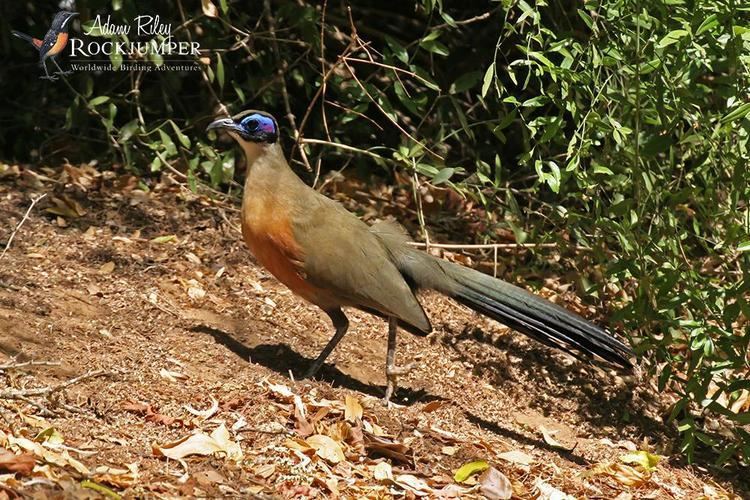
Giant coua foraging
Ecology
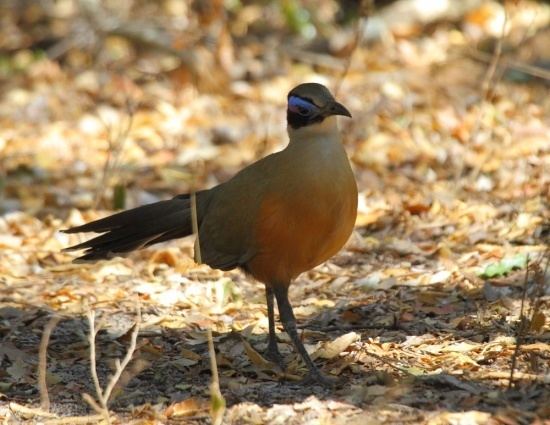
Giant couas are approximately 62 cm in length (nearly double the size of Coua coquereli) and have a blue patch around their eyes, characteristic of the coua genus and similar to African turacos (Chouteau 2006A). As a member of the cuckoo family, they have a reversible third toe and resemble coucals in their method of scrambling through plant tangles for food. Observations indicate that they can climb 10 meters high from the ground(Chouteau 2006A). C. gigas subsist on seeds (Capurodendron madagascariensis and Buxus madagascariensis), insects and some small vertebrates such as chameleons (Furcifer sp.) (Chouteau 2006A). This species of bird is often encountered in large unlogged gallery forests that lack dense shrub layers, which provides greater mobility and implies a preference for undisturbed forest with tall trees (Chouteau 2006A & 2006B; 2004). Studies indicate that in logged forests, giant coua usually glean during dry seasons and more often leap and sally during rainy seasons (Chouteau 2006A). In contrast, they have been found to do the opposite in forested areas (more often glean during rainy seasons and more often probe during dry seasons), which suggests the significant role that environment plays in foraging behavior (Chouteau 2006A; 2006B; 2004). Giant coua tend to utilize microhabitats in logged forests with a greater canopy cover, and forage in logged gallery forests with higher canopies than other areas while avoiding sites with more stems and obstacles (Chouteau 2006A; 2004).
Range
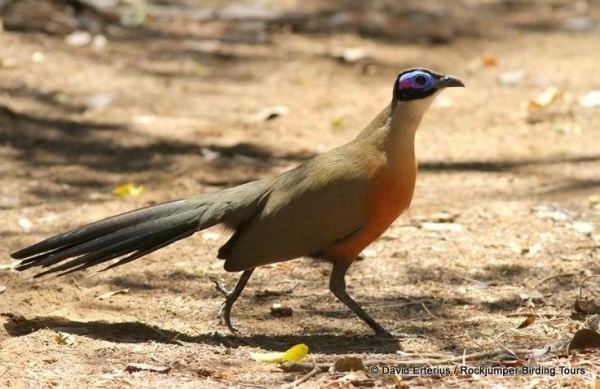
C. gigas are found in lowlands to 700 meters of western and southern Madagascar (Sibley 2007). The range of this bird species is considered large with an estimated global Extent of Occurrence of 50,000-100,000 km2. Global population size hasn't been quantified yet believed to be large since it is described as 'common' in at least parts of its range. Similarly, global population trends are not available, and even though it is believed that the species are not approaching the population decline thresholds for the criterion of the IUCN Red List (i.e. declining more than 30% in ten years or three generations), there is evidence for population decline. This summarizes the reasons for evaluating giant coua as least concern by the official Red List Authority for birds for IUCN.
Conservation
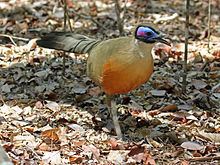
Several studies support the need to conserve the giant coua. C. gigas are among locally vulnerable species of Madagascar that are occasionally hunted and trapped by children (Ellis 2003). Disturbance by fire or logging can potentially compromise their resource use and result in an added threat to these species (Chouteau 2006). Human alteration modifies the habitat structure and affects foraging behavior and habitat selection (Chouteau 2004). Selective logging is a major disturbance for forest insectivorous birds, particularly the giant coua (Chouteau 2004; 2006B). Logging reduces C. gigas density, and increased logging or burning could reduce the optimal habitat and decrease the density of this species (Chouteau 2006B). It is necessary to retain a diversity of foraging nutrients in different habitat types to sustain the normal foraging activities of these birds (Chouteau 2006B).
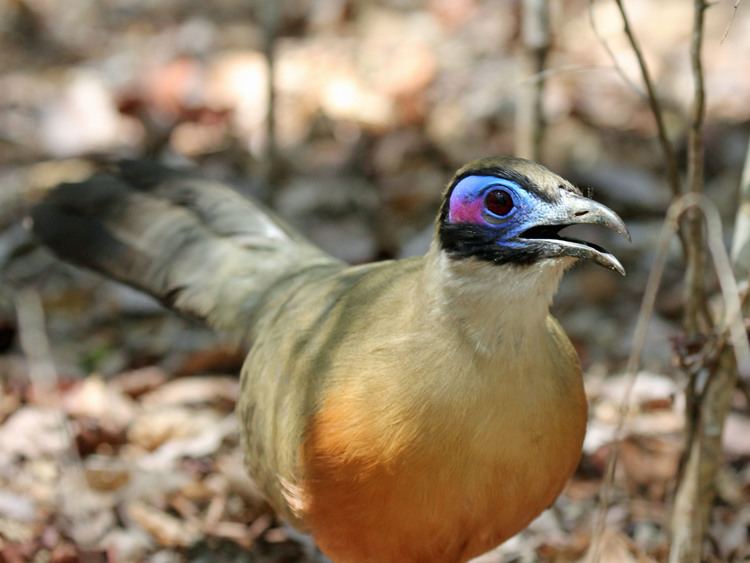
Continual studies of giant coua's foraging compliments forest conservation (Chouteau 2004). Selective logging could be restricted to the typically dry forest while gallery forests could be kept as corridor for conservation, especially for this bird species (Chouteau 2006B). Conservation of the gallery forest would be improved by logging both forest types (gallery & dry) at the same rate and implementing fire control measures (Chouteau 2006B).
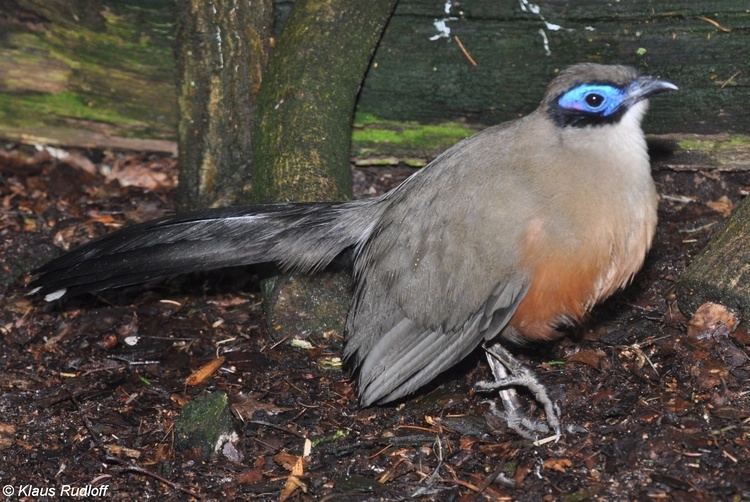
Recent sightings in Sainte Luce testify that the tail of the giant coua appears to be longer than in other regions (Ellis 2003). This negates the claim that the genus coua has no morphological specialization, instead indicating distinctive morphological differences that warrant further studies for species change (Moreau 1966). Sainte Luce is currently one of the best areas to see these birds in certain forest fragments that should have long-term management to foster limited populations (Ellis 2003). As one of the proposed conservation zones currently managed by the local community, the region has great potential for eco-tourism to promote continued conservation of the species (Ellis 2003).
